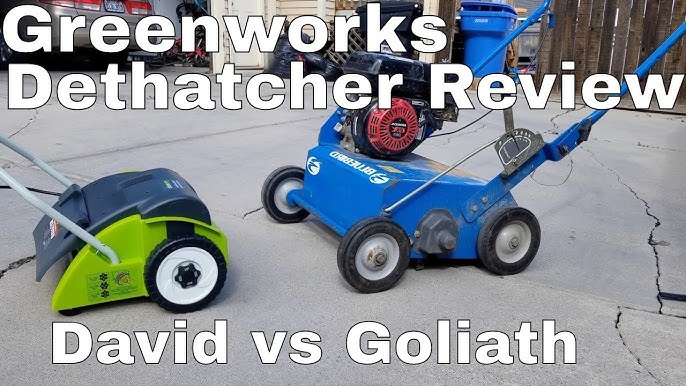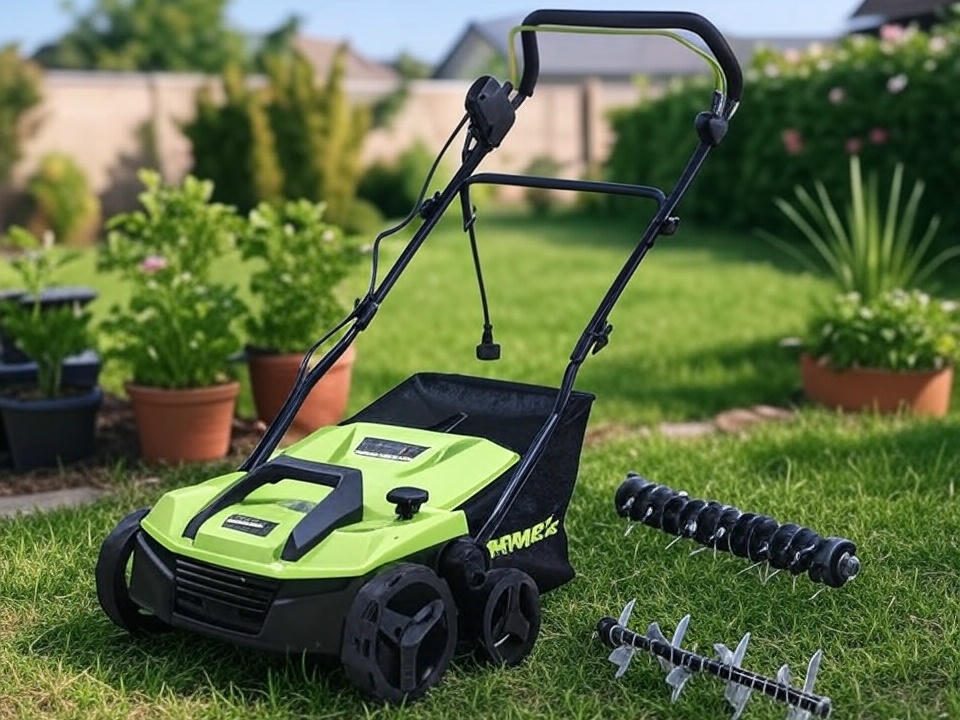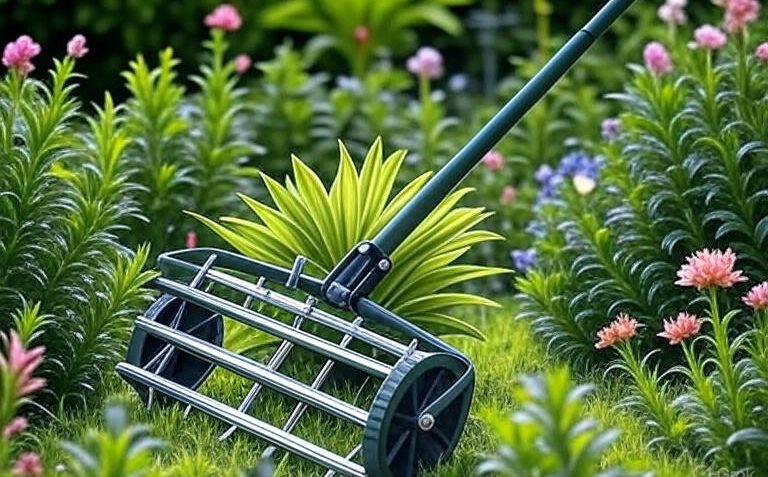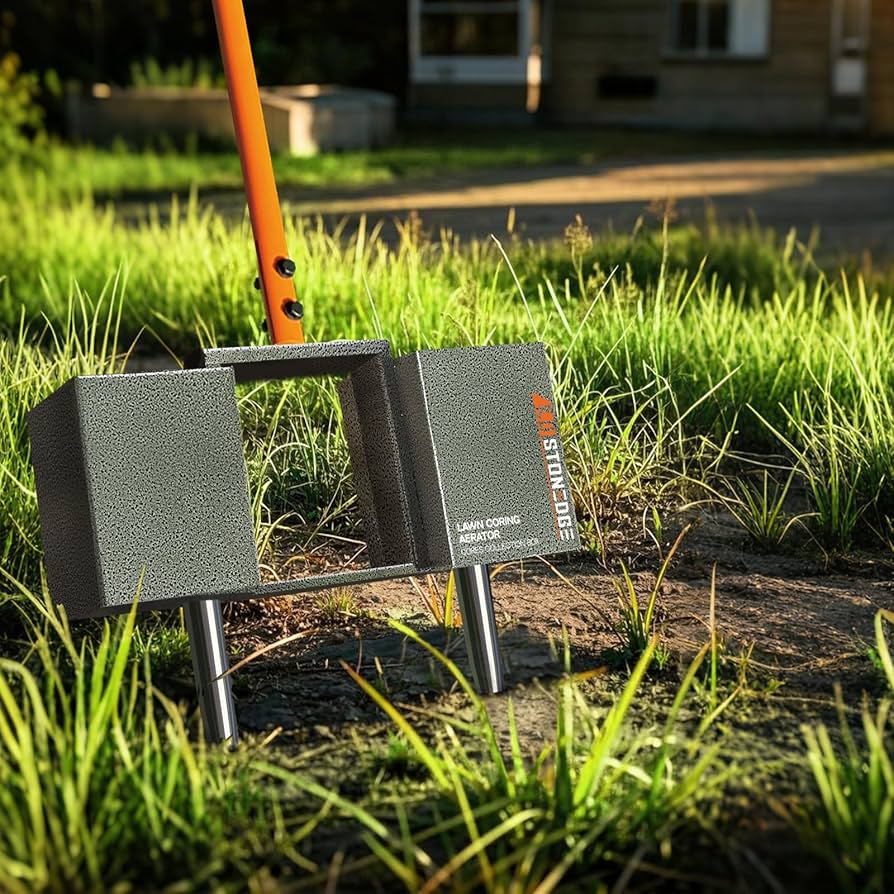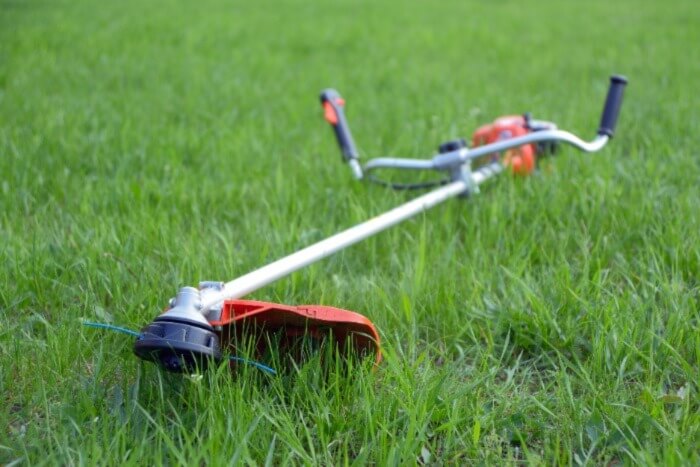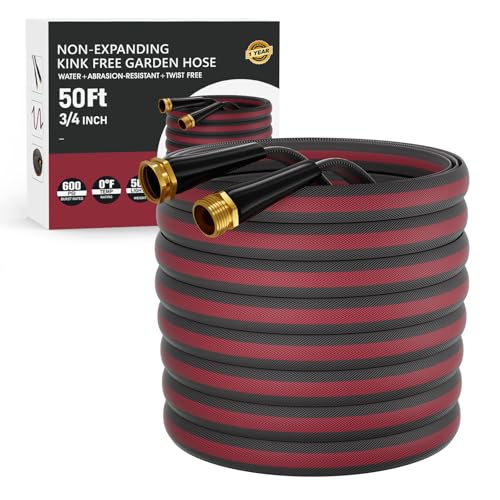You’re standing in your backyard, gazing at your lawn and wondering how to give it that lush, green look you’ve always wanted. You’ve heard about power rakes and aerator fertilizers, but you’re not quite sure which one is right for you.
This decision could be the key to transforming your outdoor space into a vibrant oasis. Imagine the satisfaction of walking barefoot on a soft, healthy lawn, feeling the cool grass under your feet. This article will guide you through the differences between power rakes and aerator fertilizers, helping you make an informed choice that best suits your lawn’s needs.
Stick around to discover which tool can unlock the full potential of your yard and give you the lawn of your dreams.

Credit: www.zingidaho.com
Contents
Understanding Power Rakes
Have you ever looked at your lawn and wondered why it seems to struggle despite your best efforts? You might not realize it, but the way you manage lawn debris can significantly impact its health. This is where power rakes come into play. These tools are not just for clearing leaves but are essential for maintaining a lush and healthy yard. Let’s dive into what makes power rakes a game-changer for your lawn care routine.
Function And Purpose
A power rake is designed to remove thatch, a layer of dead grass, roots, and debris that builds up on the soil surface. This layer blocks sunlight, air, and water from reaching the soil. Removing thatch promotes better grass growth and improves lawn health. Think of it as giving your lawn a fresh start by clearing the path for essential nutrients.
Unlike regular rakes, power rakes have motorized blades that dig into the grass and soil. They efficiently lift and break apart the thatch layer. This process not only clears the lawn but also encourages new grass shoots to grow. If you’ve ever felt your lawn lacked vibrancy, a power rake might be the answer.
Types Of Power Rakes
Power rakes come in different types to cater to various lawn needs. There are walk-behind models, which are suitable for small to medium-sized lawns. These are user-friendly and don’t require much expertise. For larger lawns, tractor-mounted power rakes offer efficiency and speed. They cover more ground and save time.
Some power rakes are adjustable, allowing you to set the depth of the blades. This feature is crucial as different lawns require different levels of dethatching. A deeper setting might be needed for a heavily thatched lawn, while a lighter touch might suffice for regular maintenance.
Benefits For Lawn Health
Using a power rake can dramatically improve your lawn’s health. It enhances air circulation and water absorption, which are vital for grass growth. A well-aerated lawn is less prone to disease and pests, ensuring your grass remains green and lush.
Power raking also stimulates the soil, encouraging new grass roots to develop. This leads to a thicker, more resilient lawn. Imagine walking barefoot on a carpet of dense, soft grass—it’s achievable with regular power raking.
Have you ever thought about how much time you spend on lawn care? With the benefits a power rake offers, you might find yourself spending less time worrying and more time enjoying your beautiful lawn. Isn’t that what we all want?
Exploring Aerators
Aerators offer a practical solution for enhancing lawn health. They promote better soil aeration and nutrient absorption. Two main types of aerators exist: core aerators and spike aerators. Each type serves a unique purpose. Understanding their differences can help you choose the right tool for your garden.
Core Aerators Vs Spike Aerators
Core aerators remove plugs of soil from the ground. This process helps roots access air, water, and nutrients. Spike aerators, on the other hand, puncture the soil without removing it. This method pushes soil down rather than pulling it up. Core aerators are often preferred for more compacted soils. Spike aerators suit less dense soils.
Enhancing Soil Health
Aeration improves soil structure significantly. It allows grass roots to breathe and grow stronger. Aerators also reduce soil compaction, enabling better water penetration. This leads to healthier lawns with lush, green grass. Regular aeration can enhance soil health over time.
Frequency Of Use
Using aerators depends on soil type and lawn condition. Most lawns benefit from aeration once a year. Some may require more frequent aeration, especially if heavily used. Observing your lawn’s health can guide you on frequency. Proper timing ensures optimal soil and grass health.
Fertilizer Basics
Your lawn deserves the best care, and understanding the basics of fertilizer can make a big difference. Fertilizers are like food for your grass, giving it the nutrients it needs to grow strong and lush. But the world of fertilizers can be overwhelming, with different types, nutrient compositions, and application techniques. Let’s break down these elements to help you choose the best option for your lawn.
Types Of Lawn Fertilizers
Choosing the right type of fertilizer is crucial. There are organic and synthetic options, each with its benefits. Organic fertilizers are made from natural materials like manure or compost, which improve soil health over time. Synthetic fertilizers, on the other hand, are chemically manufactured to provide a quick nutrient boost. Think about what your lawn needs most—a long-term soil improvement or an immediate grass growth spurt?
Nutrient Composition
Fertilizers contain three main nutrients: nitrogen, phosphorus, and potassium. Nitrogen helps grass grow quickly and stay green. Phosphorus supports root development, while potassium strengthens the grass against disease. When you see numbers like 10-10-10 on a fertilizer bag, it’s the ratio of these nutrients. If your lawn is looking dull, it might need more nitrogen. Check your lawn’s health before deciding on the nutrient composition.
Application Techniques
Getting the right application technique can make or break your fertilization efforts. Spreaders, sprayers, or simply hand spreading are common methods. A broadcast spreader can evenly distribute granules over large areas. Liquid fertilizers might need a garden sprayer for precise application. Think about the size of your lawn and your comfort level with each method. Also, timing matters—apply fertilizer during the growing season for best results.
As you consider your fertilizer choices, reflect on your lawn’s unique needs. Do you prefer a quick fix or a long-term solution? What nutrients does your grass lack? The answers will guide you in nurturing a healthier, greener lawn. Are you ready to take the next step in lawn care and see the transformation?

Credit: www.youtube.com
Power Rake Vs Aerator
Choosing between a power rake and an aerator can be tricky when aiming for a lush, green lawn. Each tool serves unique purposes and offers distinct benefits. Understanding their differences can help you make an informed decision for optimal lawn health.
Comparison Of Functions
A power rake is designed to remove thatch, the layer of dead grass and roots that accumulates between the soil and live grass. Thatch can choke your lawn by blocking water, nutrients, and air. A power rake efficiently lifts and clears this debris.
In contrast, an aerator punches holes in the soil, allowing air, water, and nutrients to penetrate deeper into the ground. This process alleviates soil compaction, promoting healthier root growth. Both tools enhance lawn vitality, but they tackle different challenges.
Impact On Lawn Health
Regular use of a power rake can significantly improve your lawn’s appearance. Removing thatch fosters healthier grass growth and enhances nutrient absorption. You’ll likely notice a greener lawn with fewer bald spots.
Aeration, however, is essential for combating soil compaction. It ensures roots can access vital resources, leading to robust growth. If your lawn feels hard and resistant, aeration can be a game-changer for its health.
Seasonal Considerations
Timing is crucial when using these tools. Power raking is best done in early spring or early fall when the grass is actively growing. It helps your lawn recover quickly and minimizes stress.
Aeration should be carried out in the fall or early spring. Cooler temperatures and moist soil conditions make it easier for the soil to recover. Have you noticed your lawn struggling during the summer? It might be time to plan for aeration.
Ultimately, both tools have their place in lawn care, but understanding their functions can help you choose the right one for your needs. Which tool will you try next to boost your lawn’s health?
Combining Tools For Optimal Results
When it comes to achieving a lush, green lawn, combining tools like power rakes and aerator fertilizers can offer remarkable results. Each tool has its unique benefits, but using them together can take your lawn care to the next level. Imagine your lawn looking so good that your neighbors wonder if you’ve hired a professional service. With the right timing, order of use, and a focus on lawn health, you can maximize effectiveness without breaking the bank.
Timing And Order Of Use
Timing is everything when using power rakes and aerator fertilizers. Start by power raking in the early spring to remove thatch that can choke your grass. This clears the way for aeration, allowing nutrients to penetrate deeper. Follow up with aerator fertilizer to enrich the soil. This sequence ensures your lawn absorbs nutrients effectively, fostering vibrant growth. Have you ever done it in the wrong order and noticed less-than-stellar results? Timing and sequence can make all the difference.
Maximizing Lawn Health
The health of your lawn depends on how well you care for it. Power rakes improve airflow by removing debris and dead grass, while aerator fertilizers enhance nutrient absorption. Together, they create an environment where grass roots can thrive. Think of it as giving your lawn a spa day—refreshing and revitalizing. You’ll notice your grass becoming thicker and greener, reducing the need for constant maintenance. Isn’t it satisfying to see your efforts reflected in a healthier lawn?
Cost-effectiveness
Combining these tools can save you money in the long run. Instead of spending on multiple products and services, focusing on these two can streamline your expenses. Renting a power rake and aerator might seem pricey upfront, but the investment pays off with a healthier lawn that requires less attention. Consider it a strategic approach to lawn care that balances quality with cost. Have you ever wondered how much you’re really saving by optimizing your lawn care routine?
Choosing The Right Tool
The quest for a lush, healthy lawn can often feel like navigating a maze of choices. Among these, deciding between a power rake and an aerator fertilizer can be daunting. Each tool brings unique benefits, but how do you choose the one that’s right for you?
Assessing Lawn Needs
Understanding your lawn’s specific needs is essential. Is your lawn struggling with thatch buildup, or does it suffer from compacted soil? A power rake is ideal for tackling excess thatch, making it easier for nutrients to reach the roots. On the other hand, an aerator fertilizer can alleviate soil compaction, enhancing air and water flow.
Reflect on your past lawn care experiences. Have you noticed patches of grass that seem to struggle or areas where water pools after rain? These observations can guide your decision, pointing towards the tool that addresses your lawn’s challenges.
Climate And Soil Conditions
Climate plays a pivotal role in your lawn care strategy. If you live in a region with heavy rainfall, your soil might be prone to compaction, making aeration a priority. In drier climates, thatch can build up faster, suggesting the need for a power rake.
Consider the soil type in your yard. Sandy soil might not compact easily, but clay soils can become a hard surface, requiring aeration. Tailor your choice to the specific climate and soil conditions you face, ensuring your lawn thrives.
Personal Preferences
Your personal preference can influence your decision more than you might expect. Do you enjoy regular lawn maintenance, or do you prefer a more hands-off approach? A power rake demands more frequent use, while aeration can be done less often.
Think about the time and effort you’re willing to invest. If you cherish spending weekends in your garden, a power rake might fit into your routine seamlessly. However, if you prefer quick fixes, aeration might be the way to go.
Ultimately, the right tool depends on a mix of your lawn’s needs, environmental factors, and your personal preferences. Which tool will you choose to nurture your lawn? The decision is yours, and the rewards can be a stunning, green oasis right outside your door.

Credit: grobigred.com
Frequently Asked Questions
What Is A Power Rake Used For?
A power rake is used to remove thatch from lawns. Thatch is the layer of dead grass and roots. Removing it improves air, water, and nutrient flow to the soil. This process promotes healthier grass growth and a more vibrant lawn.
How Does An Aerator Work?
An aerator works by perforating the soil with small holes. This allows air, water, and nutrients to penetrate the roots. It alleviates soil compaction and enhances grass growth. Aeration is key for maintaining a lush, healthy lawn.
Can Fertilizer Be Used With Aeration?
Yes, fertilizer can be used with aeration to boost lawn health. Aeration helps fertilizer reach the roots more effectively. This combination enhances nutrient absorption and promotes robust grass growth. For best results, apply fertilizer shortly after aeration.
Which Is Better, Power Rake Or Aerator?
Choosing between a power rake or aerator depends on your lawn’s needs. Use a power rake for heavy thatch removal. Opt for an aerator to reduce soil compaction and improve root access to nutrients. Evaluate your lawn’s condition before deciding.
Conclusion
Choosing between a power rake and an aerator can be tough. Both tools help improve lawn health and appearance. Power rakes remove thatch, which helps grass breathe. Aerators create small holes, allowing water and nutrients to reach roots. Think about your lawn’s needs before deciding.
Does it have thick thatch? Go with a power rake. Need better soil nutrient access? Choose an aerator. Both tools work well with fertilizer to boost grass growth. Always remember, a healthy lawn requires care and attention. With the right tools and techniques, a lush and green lawn is within reach.
